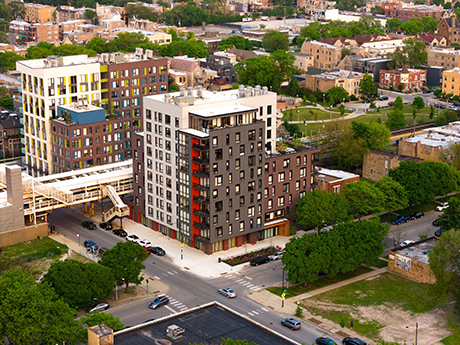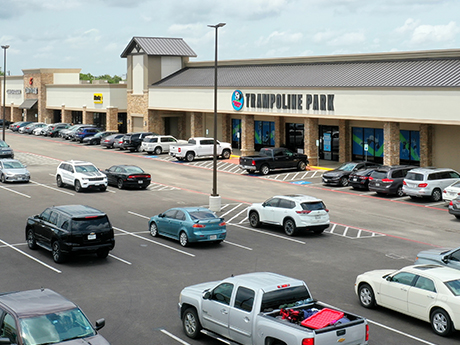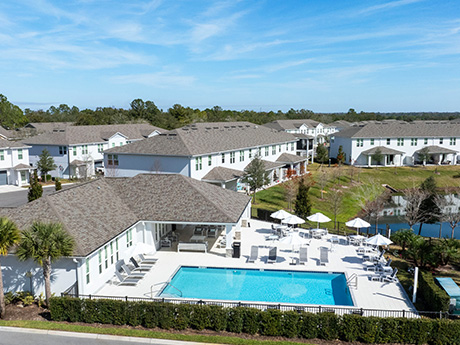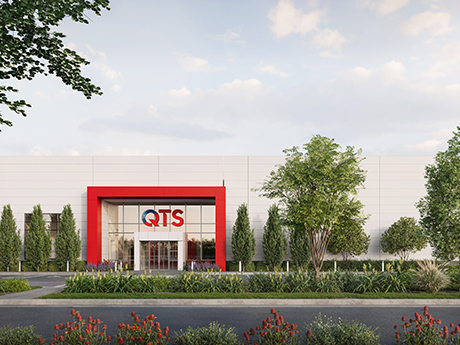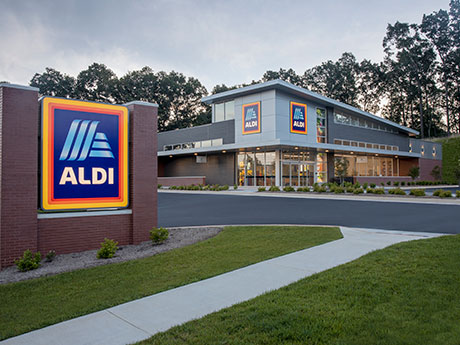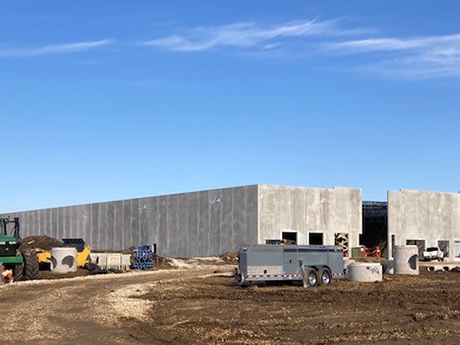By Yanitza Brongers-Marrero, Moody Nolan Rent growth in cities across the Midwest is booming, encouraging developers and municipalities alike to ramp up investment in the region. As interest shifts away from coastal markets that became overbuilt during the pandemic, the Midwest’s stability and growth potential are coming into sharper focus. Columbus, Ohio, is leading the charge with adding 30,348 new residents in the past year, a 1.4 percent growth rate that outpaces both the national (1 percent) and Midwest (0.6 percent) averages, according to the latest U.S. Census estimates. Projections suggest the region could gain another million residents by 2050, underscoring its long-term demand for housing. Chicago, meanwhile, remains the Midwest’s economic engine. The metro area ranks third in the U.S. by GDP at $860 billion and saw a 4.6 percent year-over-year rent growth in June, according to CoStar. The city also added 22,164 residents from mid-2023 to mid-2024, marking the seventh-largest population gain in the U.S. Together, these cities, along with Minneapolis, are shaping the next chapter of multifamily investment and housing innovation in the Midwest. What are the major influences you’re seeing fuel the growth in demand for multifamily projects in the Midwest? Being five years out from …
Market Reports
— Tim McKay of Cushman & Wakefield — Seattle’s multifamily market has faced challenges over the past few years. Rent growth has been flat as a significant number of new units were delivered in 2023 and 2024. This new supply also led to concessions and even rent declines in some markets. Submarket supply issues and the new statewide rent control legislation have also contributed to market headwinds. However, 2025 has brought signs of recovery, and there’s optimism about the market’s trajectory over the next few years. It feels like Seattle has bounced off the bottom and is starting to climb back up, similar to the recovery seen in 2011 after the Global Financial Crisis. Rebounding Demand The multifamily market has seen a recent uptick in demand, which can be attributed to several factors. A key driver has been the return-to-office mandates from major employers like Amazon and Starbucks. Seattle’s population is also expected to grow again, and the supply of new units hitting the market has drastically declined. These factors are contributing to renewed growth after a four- to five-year stagnation. Stabilizing Rental Rates Owners are starting to put properties under contract again. Land prices haven’t returned to previous levels, …
By Kenneth Katz, principal at Baker Katz Growth and innovation opportunities remain strong in Texas, despite ongoing changes in the retail sector. True potential often emerges not just from redeveloping individual buildings, but also from reimagining the future of entire communities. Identifying underutilized retail assets where others see stagnation — and meticulously transforming them into vibrant, value-generating destinations — is key to successful retail redevelopment projects. At its core, redevelopment is a response to change. When commercial properties are first built, they are typically developed to meet a market’s needs in terms of an appropriate tenant mix, functional layouts, attractive aesthetics and other key attributes. Over time, however, as communities evolve, populations shift, infrastructure expands and tenant preferences and tastes change, previously optimized projects can gradually underperform. These shifts create opportunities for thoughtful redevelopment. Identifying Strong Candidates Properties that no longer meet the desires or needs of a community are often the strongest candidates for redevelopment. These can include projects with outdated configurations, limited accessibility due to changes in roadways or high vacancy rates from tenant relocations or bankruptcies. Other high-potential properties may suffer from deferred maintenance that has reduced occupancy and rents or from aesthetic obsolescence that discourages both …
Orlando Multifamily Poised for Strong Second Half of 2025, Momentum Heading Into 2026
by John Nelson
Orlando’s multifamily investment market hit an inflection point in the first half of 2025. Insurance rates and construction starts tapered, and we’ve started to see cap rate compression and signs of rent growth. Our traditional, “household name” and institutional multifamily buyers are back in the market and at the top of the bid sheet. Additionally, investors are showing a strong interest in and appetite for build-to-rent (BTR) communities as that subsector continues to gain favor. It’s a significant improvement from where we were, coming off the post-pandemic roller coaster ride that saw record years for multifamily investment and pricing in 2021 and 2022 followed by interest rate spikes, cap-rate spikes and all coinciding with higher construction costs, skyrocketing insurance costs and a supply glut. Of course, Orlando is one of the fastest growing metros in the United States, so new multifamily supply is certainly needed as the region grows in terms of population and affluence. Orlando’s population is expected to hit 3 million this year, with the metro area adding 1,500 new residents per week, according to the Census Bureau. What’s more, year-over-year median household income grew 3.6 percent year-over-year. It’s no surprise that the region continues to rank among …
By Scott Olson, Skogman Commercial Each year when I update exciting growth in Iowa’s second largest city, it is hard to imagine the pace can continue despite what we hear nationally about high interest rates, tariffs and inflation. Plus, this great city adapts after natural disasters to quickly recover and create a better place to work and call home. Our latest national rankings reflect this effort, skill and dedication: • No. 1 city for affordable housing in America (WalletHub, 2025) • No. 3 best place to live in the Midwest (Spacewise, 2025) • No. 12 best city for economic opportunity (U.S. News & World Report, 2025) • No. 4 city with most affordable rent (WalletHub, 2025) • No. 17 best city to buy a house in America (Niche.com, 2025) • A top 100 best city for jobs in America (WalletHub, 2025) • A top 100 best place to retire in America (Niche.com, 2025) • No. 7 safest city in America (WalletHub, 2025) • No. 33 best run city in America (WalletHub 2024, top 40 ranking since 2017) In fall 2024, the City of Cedar Rapids was selected to participate in the Bloomberg Harvard Innovation Track as a continuation of the …
By Taylor Williams Everybody always remembers the one who got away, but what if they’d never shown up to the party in the first place? Or in the case of the Texas commercial development boom, is it possible that one specific asset class simply never took root, or is it more likely that it just hasn’t happened yet? The mystery party guest/asset class could only be life sciences — a sector that is somehow a quasi-subcategory of healthcare real estate, a longshot end use for an industrial conversion, a property type that represents the evolution of commercial-grade lab space and an investment vehicle that has captured billions of capital in coastal markets — all rolled into two basic words. And while the big-money question surrounding life sciences growth in Texas is not “what?” but “when?,” examining what the field actually already encompasses in the state is important to understanding the potential for a future boom. After all, it’s not as life sciences is nonexistent in Texas. According to a 2025 report from JLL titled, “Why Texas Life Sciences?” there are already some 8,700 life sciences companies employing more than 150,000 people in the state. More than $1.5 billion in combined …
Orlando has emerged as one of the Southeast’s most competitive retail markets, where robust tenant demand and limited supply are driving both leasing velocity and investor urgency. With availability near historic lows below 4 percent and most new construction preleased, the market offers few options for the wave of private and institutional capital targeting Central Florida. This imbalance is fueled by strong population growth and resilient consumer spending. Quality retail assets continue to trade quickly, while lower-tier properties remain on the market longer. Buyer pricing remains grounded in fundamentals, and the gap between buyers and sellers has narrowed, making deals increasingly feasible. Investment activity has accelerated in 2025, following 12 to 18 months of steady engagement from private capital. Institutional buyers, including REITs and national funds, are now re-entering the market, primarily targeting stabilized assets in high-growth suburban corridors where tenant rosters offer long-term income visibility. Unanchored and grocery-anchored centers remain in high demand, especially in infill locations with constrained supply and strong population growth. While investor appetite is strong, today’s environment has created a bifurcated market. Well-located, quality centers continue to trade quickly, often with multiple offers, while less desirable assets linger. 1031 exchange buyers and out-of-state groups remain …
By Chris Beason, NAI Ruhl Commercial Co. As we move through 2025, the commercial real estate market in the Quad Cities region continues to adjust to tighter capital markets, rising costs and evolving consumer and business preferences. The bi-state region of the Quad Cities includes Moline, East Moline and Rock Island, Illinois; and Davenport and Bettendorf, Iowa, as the main core cities. The Quad Cities is the largest metro area between St. Louis and Minneapolis on the Mississippi River. When you look at the fundamentals like industrial absorption, land sales and retail demand, the Quad Cities continues to outperform expectations. The level of investment we’re seeing from both global tech companies and regional developers shows long-term confidence in the strength and potential of our market. Pivotal year for industrial The Quad Cities market mirrored the national trends with increased development of industrial buildings and rising rental rates. While the new industrial development we have seen locally over the past three years is to be celebrated, there is still a shortage of smaller 10,000- to 50,000-square-foot buildings. This is especially true for companies that desire to purchase real estate. There is significantly more inventory for lease of smaller product available than …
— By Sebastian Bernt of Avison Young — The San Diego office market is beginning to stabilize in 2025. However, recovery remains uneven amid elevated vacancy, rising sublease availability and evolving workplace strategies. While quarterly leasing activity has improved modestly— up roughly 7 percent year over year through the second quarter — overall fundamentals remain challenged. San Diego’s total office availability rate stands at 18.2 percent as of the second quarter. This is flat from the previous quarter but still up more than 500 basis points from pre-pandemic norms. Sublease availability exceeds 2.2 million square feet, a lingering effect of corporate downsizing and the continued shift toward hybrid work models. Sublease inventory is most concentrated in suburban nodes such as UTC and Sorrento Mesa, as well as Downtown San Diego. Demand remains strongest for Class A assets in suburban submarkets like UTC, Del Mar Heights and Sorrento Valley where tenants prioritize modern, amenity-rich properties. Even within these markets, average deal sizes have declined by 20 percent to 30 percent compared to 2019 levels, with users often consolidating space and seeking shorter lease terms. Downtown San Diego continues to face pronounced headwinds, with vacancy topping 25 percent in several Class B …
In a world where volatility has become the norm in commercial real estate, Memphis stands out as a market defined by consistency. While other cities have experienced dramatic swings in vacancy, absorption and construction activity, the Memphis office market continues to follow a more measured pace. “Slow and steady wins the race” is more than a phrase — it’s a fitting summary of how Memphis has maintained balance amid national disruption. Stability in supply Over the past couple of decades, the total supply of office product in Memphis has grown at a moderate pace, sitting at nearly 28 million square feet today. This disciplined approach has kept vacancy within manageable levels and prevented the oversupply issues seen elsewhere. With no new speculative construction of size since 2009, the market has had time to absorb shifts in tenant behavior without being flooded with excess space. Demand aligns with supply Because supply has remained relatively static, demand has shifted in composition rather than volume. Like many cities, Memphis has seen a “flight to quality,” with tenants prioritizing modern, amenitized spaces over outdated properties — even if that means reducing their footprint. A company that once leased 30,000 square feet in a Class …


